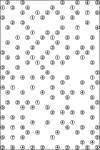about 15 years ago - 1 comment
Hashi 4-way puzzle
I’ve been on holiday, so sorry for the lack of posts. But, very quickly, here’s a 4-way Hashi for you! Connect no more than 4 bridges between any pair of horizontally or vertically neighbouring islands.
Good luck!
about 15 years ago - 1 comment
Hashi-3 12×12 puzzleHashi-3 example solution
I’ve been discussing Hashi variations in the comments to a previous posting, so I thought I’d try out one of them today. This is not a brand new variation because it’s a somewhat obvious change, but it’s not very commonly seen even so.
In this version of Hashi you must place no More >
about 15 years ago - 1 comment
Hashi 15×15 Tricky puzzle
Following up Friday’s first Hashi puzzle here, I thought I’d post a somewhat trickier example. It’s fairly straightforward until you’re nearly finished, then you’ll have to think just a little bit to complete the puzzle.
For full instructions, please see my previous post.
Good luck!
about 15 years ago - 2 comments
Hashi 20×20 Easy Puzzle
I haven’t posted a Hashi (aka Bridges) puzzle before, partially because until yesterday I had never got round to writing a program to draw the PDFs – and drawing them out in Illustrator is a little bit time-consuming, so I had kept my Hashi production to the bare minimum. But now I’ve More >
![]()


about 15 years ago
I enjoyed it, but I didn’t really find it that interesting. I feel that too many 6s, 7s, and 8s reduce this one into smaller puzzles.
When I have done these in the past, some of the more interesting Hashi have an extra rule that I mentioned earlier (no loops or rectangles). Has anyone else heard about this extra restriction?
These puzzles are fun. I found it a good refresher since I hadn’t done Hashi for a while.
I found it a good refresher since I hadn’t done Hashi for a while.
about 15 years ago
No, I agree it wasn’t that interesting. I just wanted to get a really big one online mainly.
I’ve only ever seen that rule of ‘no loops’ mentiond in the options on someone else’s Hashi program (not a very good one, either) – I’ve never seen it in an actual printed puzzle. It wouldn’t be hard to try, mind you, but wouldn’t it be a bit fiddly on large puzzles?
about 15 years ago
Now that you mention it, I remember that puzzlepack program and agree that those Hashi weren’t very good.
Apologies for mentioning a competitor, but in the Puzzler/Nikoli Sudoku mini-mag they usually have 2 really big Hashi puzzles that are quite challenging IMO. Most of the time they follow the no loop rule and you have to logically check the bridge blobs to make sure that you don’t close them off into smaller puzzles. I usually put a symbol next to an island (star, x, etc.) in order to show that island as part of a bigger group. Eventually the stars have to merge with the x’s.
about 15 years ago
Haha – thanks, but to be honest I don’t think Puzzler really qualify as a direct competitor, given that a few years ago they were bought for 85 million pounds, suggesting they’re somewhat larger than me… on the other hand, if anyone wants to offer me 85 million pounds for my puzzle resources I’d be happy to talk!
Yes, the large Nikoli Hashi are often excellent, and as you say there are virtually always parts where you have to work out where areas would be disconnected if you made a particular move.
Although they typically don’t have loops, it’s not actually a solving constraint, though, is it? I’ve never seen a Nikoli Hashi with that constraint at any rate. (on the other hand, I don’t read Japanese… ). I doubt Puzzler would publish a Hashi with a ‘no loops’ constraint, unless they made the puzzle look visually different so that people didn’t miss the ‘new’ rule.
). I doubt Puzzler would publish a Hashi with a ‘no loops’ constraint, unless they made the puzzle look visually different so that people didn’t miss the ‘new’ rule.
But ‘no loops’ is definitely a valid variation, and I might well try it. Some other Hashi ideas are:
* allow more than 2 links between islands (I’ve seen this before)
* allow diagonal lines (never seen it, although there is a different puzzle that LOOKS like Hashi with diagonal lines!)
* have wrap-around lines from one side to the other
* have ‘tunnels’, ‘walls’ and other extra regions within the grid